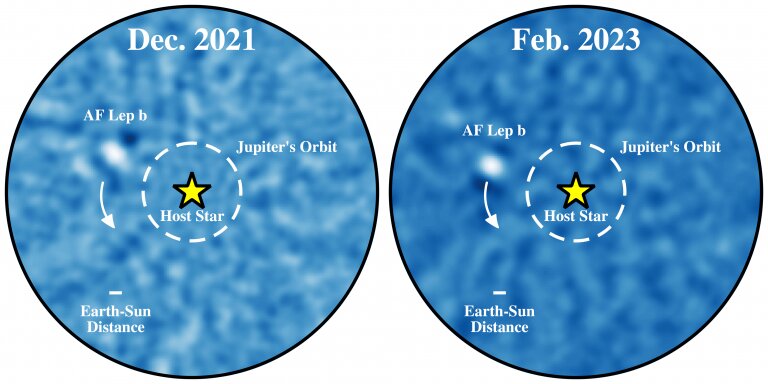Using the telescopes of the Keck Observatory, astronomers could obtain direct images of a newborn exoplanet in the AF Leporis system. To date, this is the smallest exoplanet that has been photographed.

The AF Leporis is located 87.5 light-years from Earth. It is a young luminary of spectral class F. In the terrestrial sky, the star is on the verge of being visible to the naked eye.
Now we know that there is at least one exoplanet in this system. It was discovered by a group of researchers from the University of Texas at Austin using the astrometry method — by measuring subtle changes in the position of the AF Leporis relative to other stars over many years. The analysis showed that they were caused by a body which orbits at a distance of about 8 au from the sun, and the mass was three times the mass of Jupiter.
To further confirm the discovery, the telescopes of the Keck Observatory were used. Thanks to the presence of an adaptive optics system and a coronagraph, astronomers could cut off the light of the AF Leporis and catch the luminous flux coming from the exoplanet (it is about 10 thousand times weaker than the star).
This is an important achievement. To date, astronomers have managed to obtain direct images of only a couple dozen exoplanets — and the exoplanet in the AF Leporis system is the smallest of them. This world is sure to be the subject of future observations by both the James Webb Telescope and the next generation of ground-based observatories.
Earlier we talked about how astronomers discovered an undeveloped embryo of a gas giant.
According to https://phys.org
Follow us on Twitter to get the most interesting space news in time
https://twitter.com/ust_magazine
